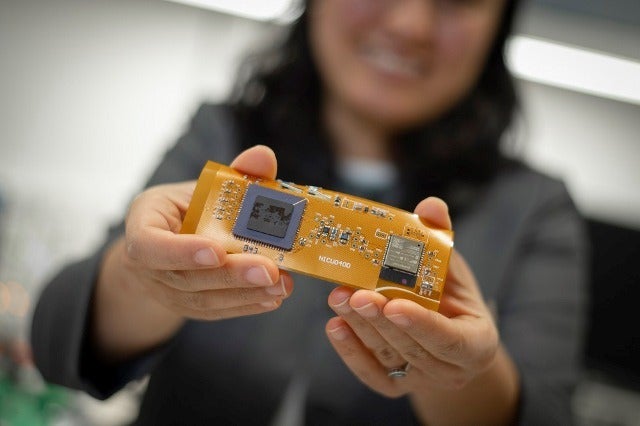
Researchers at Worcester Polytechnic Institute (WPI) have created a miniaturised, wireless oxygen sensor to measure blood oxygen levels in sick infants.
The miniaturised wearable device, which is in the size of a band-aid, has been designed to remotely monitor baby’s blood oxygen levels, helping to know whether the baby’s tissue is receiving adequate oxygen supply.
In contrast to the current systems used in hospitals, the miniaturised oxygen sensor is flexible and stretchable, as well as mobile-enabled.
Led by WPI’s integrated circuits and systems lab director Ulkuhan Guler, the project is primarily focused on facilitating sick and hospitalised babies to be untethered from wired sensors, allowing to easily and frequently examine them.
Guler said: “Extended stays in the hospital are costly and can be a strain on families.
“And studies have shown that babies’ health improves when they are with their families. Our goal with this affordable, mobile device is to give doctors more flexibility in monitoring their patients both in the hospital and at home.”
The miniaturised device has been designed to measure partial pressure of oxygen
Guler’s healthcare device, which will use wireless power transfer, can be connected to the Internet wirelessly to help alarm on a monitor in a doctor’s office or smartphone app notify medical personnel and family members when the baby’s oxygen level begins to drop.
The miniaturised device has been designed to measure partial pressure of oxygen (PO2), which is a significant indicator of respiratory health compared against simple oxygen saturation measurement.
The wearable baby oxygen monitor can also be used for adults, specifically people with severe asthma and seniors with chronic obstructive pulmonary disease (COPD).
Guler will revise the wearable device for adults in the next phase of her research. The researchers will also work to create a related smartphone app.
Designed to work inside the wearable oxygen monitor, the chip holds capacity to activate the optical sensor and capture analogue signals from the sensor. It will help in the power management and contains required circuitry.
Guler, along with his team, has designed the individual circuits such as signal capturing circuits and driver circuits for optical based read-out circuits.
The team aims to equip the chip with more circuitries to digitise the analogue signals transmit the captured and digitised data, and create power from a wireless link, in another phase of the research project.
In June this year, TransMedics secured an FDA PMA approval for expanded clinical indications of the Organ Care System (OCS) Lung.






